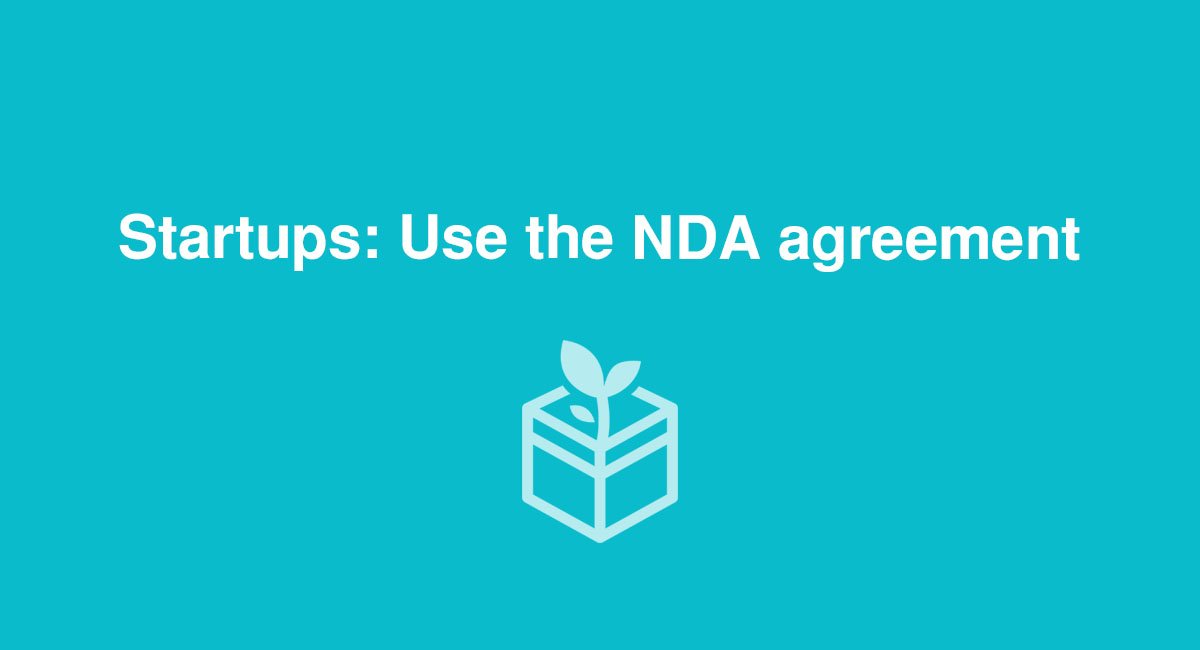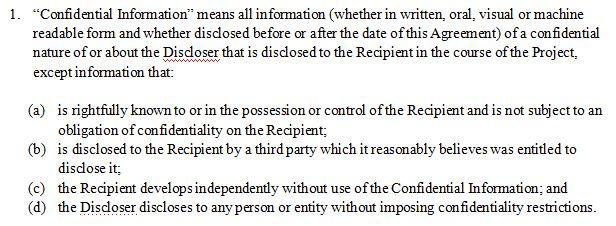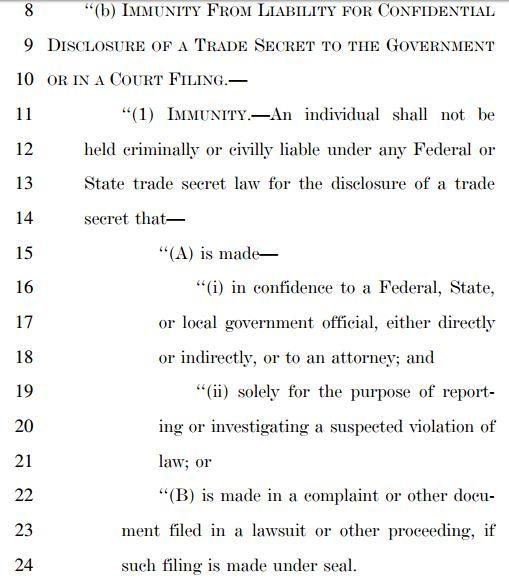Startups: Use the NDA agreement

Just like one business is different from another, each startup will have its own specific needs and points of difference.
Because of this, any agreement that’s created for a startup should be structured to meet the specific requirements and unique factors of that particular startup, including non-disclosure agreements.
What are Non-Disclosure agreements
A non-disclosure agreement (NDA) is a legal contract between parties where a party that receives confidential information (“Receiving Party“) from another party disclosing that information (“Disclosing Party“) promises not to disclose that information or to use it without permission from the Disclosing Party.
If both parties are disclosing confidential information, then a mutual NDA will be used, whereas disclosures by only one party will only require a unilateral agreement.
Normally in situations where two startups are interested in working with each other, a mutual non-disclosure agreement will be used since both startups are likely to have their own confidential information to protect.
The period of disclosure will differ from agreement to agreement, depending on how important the information is and can last even after the working relationship between the parties have officially ended.
These non-disclosure agreements can be used in all sorts of situations such as in the hiring of employees, consultants and independent contractors, in the development of a licensing, distribution or joint partnership and in the merger, sale and acquisition of another business.
The purpose of a non-disclosure agreement is to protect confidential information. In other words, if you don’t really have any confidential information to share or protect, there’s no point in creating this agreement.
Although these agreements are important in providing you with a legal right to enforce unauthorized disclosures and use of your confidential information, the reality is that a fair number of parties view the non-disclosure agreements suspiciously.
Insisting on signing this agreement too early on in the development of a relationship when you’re still figuring each other out sends a message that you don’t trust the person and may set the relationship on a bad start.
Plus, nobody really likes the thought of legal liabilities being created against themselves without any return benefits.
Investors and venture capitalists are notorious for refusing to sign non-disclosure agreements when asked to view or hear business pitches for their money. This is because venture capitalists and investors can go through 10 pitches in a week and it gets too hard for them to keep up with a multitude of agreements and contracts, especially if some of the ideas are very similar.
Similarly, some other independent contractors such as developers who work with multiple clients may refuse to sign your non-disclosure agreement that increases their risk of being sued by an ex-client or limits their ability to find future similar work.
In other words, most parties are not that keen to sign a potentially limiting legal agreement if there’s no real intention to have a mutually beneficial working relationship.
So how would you protect your confidential information in such situations?
The best initial plan of action is to have a pitch or way of describing your product or service without revealing truly essential secrets.
For example, if you’re pitching an app, you could describe what the app would be able to do for your customers without revealing what specific processes or algorithms your startup would be using.
Similarly, if you merely want to interview a potential developer to work for your startup, then find ways to describe to him or her what you are looking for without revealing your ultra confidential information so that there’s no need for a non-disclosure agreement.
Once you and the independent contractor or employee have both decided that you want to continue with a formal working relationship or the venture capitalist wants to invest in your startup, then it makes more sense to ask for a non-disclosure at that point.
The negotiation on signing this legal agreement can become even easier if you and the other party both have confidential information to share and you both agree to a mutual non-disclosure agreement.
8 tips for startups to have a good non-disclosure
Tip 1: Appropriate Definition of Confidential Information and Exceptions
It normally falls to the Disclosing Party to decide what information would be considered confidential from what is merely ordinary information
Confidential information can range from formulas, patterns, algorithms, marketing strategies, pricing lists, documents, designs, sketches, analyses, source codes, manufacturing processes to technical procedures.
As you can imagine, it can be very tempting to choose a definition of confidential information that’s unnecessarily wide and cover information that really isn’t confidential.
Although you want to make sure that you provide sufficient protection for your confidential information, the other mistake would be to use a definition that is too broad or goes out of scope.
Instead of a vague definition, be very clear about your objectives for creating a non-disclosure agreement and stick with the specific purpose for the agreement.
A specific definition not only provides better guidance to the Receiving Party to understand what information is truly confidential (compared to ordinary information), but it also lowers the risk of a court invalidating the agreement.
For example. in Lasership, Inc. v. Watson, the Virginia court held that the definition of confidentiality in the agreement applied too broadly.
Here’s an example of a definition of confidential information taken from an NDA from Docracy:

It’s also a good idea to include exceptions to the requirement for confidentiality.
Here’s an example of a clause from the Confidentiality Agreement by Genie App Studio:

Tip 2: Defined Purpose Of Disclosure
Providing a defined purpose of disclosure helps to add specificity, clarity and scope to the non-disclosure agreement.
For example, here’s a Statement of Limited Purpose from Microsoft in its Confidentiality Agreement for Licensing Discussions to clarify what disclosures the agreement is meant to apply to:

Here’s a second example taken from AllMerchants:

Tip 3: Duration of the Receiving Party’s Obligations
A good non-disclosure agreement will never leave to chance or others’ interpretation the duration for which the obligation to keep confidentiality is meant to last.
When deciding on a suitable duration for the agreement, some factors to consider should be:
- How important is the confidential information to your startup?
- Will the confidential information change over time and no longer be useful to your startup after a period of time?
- What would be a reasonable limitation on the Receiving Party’s ability to find future work within the same role or type of job, if this party is a contractor or soon-to-be employee?
-
Are you going to be sharing any confidential information that qualifies as a trade secret?
Trade secrets need special protection and if so, it would be perfectly reasonable to require indefinite confidentiality for any trade secrets that you share.
Here’s an example of a one year duration clause from the Confidentiality Agreement by Genie App Studio:

This second example from AllMerchants provides for an indefinite duration for valuable and proprietary information unless deemed illegal by a court, wherein the duration will be limited to 10 years:

Tip 4: Non-Disclosure, Non-Use And Permitted Uses
The non-disclosure agreement should expressly prohibit the disclosure and use of confidential information without the permission of the Disclosing Party.
Also, it can be useful to state specifically what the permitted uses of the confidential information are.
Here’s an example from Thoughtbot’s Mutual Non-Disclosure Agreement:

Tip 5: IP rights
To protect your rights to any of your existing intellectual property or new intellectual property that may be created during the course of your startup, you can include a clause that specifically provides for this.
For example, AllMerchants provides such a clause in its Source Code NDA agreement:

If you’re working with an independent contractor to create something that may give rise to new intellectual property rights, you could use a work for hire clause.
Here’s an example from the Apriorit Software/R&D Outsourcing Non-Disclosure Agreement:

Tip 6: Legal Remedies
The common remedies for a breach of confidential information are monetary damages and equitable remedies such as an injunction to stop a breach from occurring.
Trade secrets have specific common law and legislative protection under the Uniform Trade Secrets Act (UTSA) in the USA.
However, under the new Defend Trade Secrets Act 2016 (DTSA), a Disclosing Party may be granted an ex parte property seizure order if certain requirements such as the ability to prove that the potential harm to the Disclosing Party for a breach of trade secret is greater than the potential harm to the Receiving Party and other third parties if the ex parte seizure order was granted.
To be able to qualify for remedies under the DTSA, the non-disclosure agreement must include an immunity provision for whistle blowers that informs them that they are protected from any civil or criminal lawsuit if they were to disclose trade secrets when reporting a legal violation to a government official or attorney.
Here’s the required immunity provision as described in the DTSA act itself:

And:

Tip 7: Jurisdiction and Governing Law
A good non-disclosure agreement will specify the jurisdiction and governing law that’s to apply to the agreement in case of any future legal disagreements.
Different jurisdictions may have slightly different views of what would be reasonable clauses and what would be too burdensome. If you do not provide for a jurisdiction or governing law, if there’s subsequent contention about it, you may be looking at extra legal fees and time delays to determine the matter in court.
An example of a clause that provides for jurisdiction and governing law can be found in Microsoft’s Confidentiality Agreement for Licensing Discussions:

Tip 8: Obligations After Contractual Relationship Ends
Normally, even after your formal working relationship ends, the Receiving Party is still obligated to protect confidentiality, depending on whether the requirement of confidentiality was expected to extend beyond the date of the expiry of the non-disclosure agreement.
However, on top of this, you may also wish to state your expectations of what the Receiving Party has to do with all of your confidential information that is in its possession after the end of the working relationship.
For example, you could require the Receiving Party to return all copies of your information to you and/or destroy any other electronic and physical copies that they still hold.
An example of such a clause can be found in Thoughtbot’s Mutual Non-Disclosure Agreement:

Besides having a good non-disclosure agreement, you should have some minimum good practices in place such as making sure that you inform the Receiving Party in advance before you send over any confidential information and that you also mark the information as “Confidential” to make it clear to the Receiving Party that the information is confidential.
The strength of protection for your startup’s confidential information depends on a combination of your non-disclosure agreement and its terms, your business practices, the Receiving Party’s integrity and work practices as well as your ability to take action to prevent breaches.
Jan 30, 2017 | Non-disclosure Agreements
This article is not a substitute for professional legal advice. This article does not create an attorney-client relationship, nor is it a solicitation to offer legal advice.